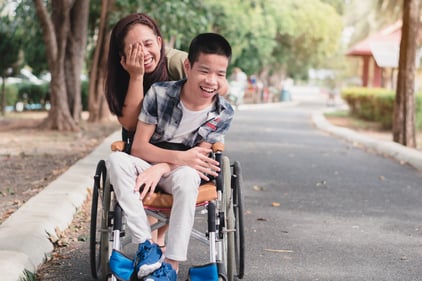Pediatric Bladder Health
Join Our Movement
What started as an idea has become a national movement. With your support, we can influence policy and inspire lasting change.
Become an Advocate
A bladder program using intermittent catheterization is used to treat neurogenic bladder. For some children, a suprapubic indwelling catheter may be needed to avoid autonomic dysreflexia (AD) and other health issues. Children and parents may elect to have a surgical procedure called Mitrofanoff where a connection to the bladder is made through the belly button. This makes it easier to catheterize independently, especially for girls.
If a neurogenic bladder is present at birth, a bladder program is immediately established. Overflow incontinence should not be confused with emptying the bladder. Significant damage to the kidneys can occur with the postponement of initiating a bladder program. As children age, a plan should be put into place to transition catheterization responsibilities from the adult to the child. Begin by explaining what you are doing in simple terms. When able, have the child gather supplies, then have them watch what you are doing, followed by the child instructing you about the next step. When hand control is gained, have the child do the cleaning and removal of the catheter. Eventually, they should place the catheter themselves. Be flexible with the plan as you want your child to master a step before moving ahead. Some children will be able to catheterize by school age, others may not until ages eight or nine. It is not a goal of who gets their first but mastery of the process.
Other supports for bladder function may be recommended. Review fluid intake to avoid sugary drinks, caffeine, and alcohol. Be sure the bowel program is timely completed to allow complete bladder emptying. Medications may be used to assist with bladder and/or sphincter contraction or relaxation. Botox injections can help reduce tone/spasticity in the bladder and/or sphincter. Surgical augmentation to increase bladder and outlet resistance may be considered as needed.
It can be challenging for an adult to relinquish catheterizing duty to a child. However, this is a process that is normal for your child. Teaching them independence in toileting is a part of growing up. It will keep their kidneys in good function through adulthood.
